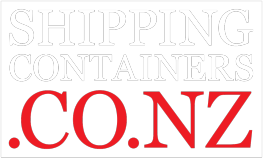Class 3 Dangerous Goods Containers (also known as Hazardous Goods and Liquids Storage containers) are the ideal storage units for paint, thinners, oils, diesel, chemicals, class 3 flammables and any other potentially dangerous substance. Most have features such as
- an emergency exit door
- litre bund capacity (1500 for 10′) (3000 for 20′) (6000 for 40′)
- oversized ventilation areas
- a tap for removing spills
- removable expanded mesh floor.
Only buy Dangerous Good containers from a reputable company – they usually need to comply with the regulations set out under the HSNO Act 2003. The final container storage solution for your dangerous goods should be custom modified by specialist engineers or supplied new from overseas suppliers.
For transport on land, dangerous goods include substances that have explosive, flammable, toxic, infectious, corrosive or environmentally hazardous properties, and containers that have held dangerous goods. If you’re unsure if you need a Dangerous Goods container or not, here are some commonly available goods that are classified as dangerous for transport include:
- ammunition and fireworks
- aerosol canisters
- LPG cylinders
- oxyacetylene cylinders
- compressed air cylinders for scuba diving
- flammable liquids such as petrol, kerosene, methylated spirits, turpentine, thinners, solvent based paints and epoxy resin
- hardener for epoxy resin
- some swimming pool chemicals
- some commercial and household cleaning products, such as dishwasher detergents
- some garden care products
- diesel.
For transport, dangerous goods are identified with a UN number, a proper shipping name and a diamond-shaped class warning label. Some products also have special marks to warn of hazards that are not indicated by other labels or marks. For example, products that are toxic to the aquatic environment are identified with the environmentally hazardous substance mark (a diamond-shaped symbol of a dead fish and tree). Dangerous goods packaged for retail sale don’t always have the diamond-shaped class label on the package, but are marked with warning information to identify the hazards they present.

